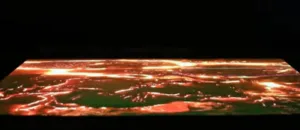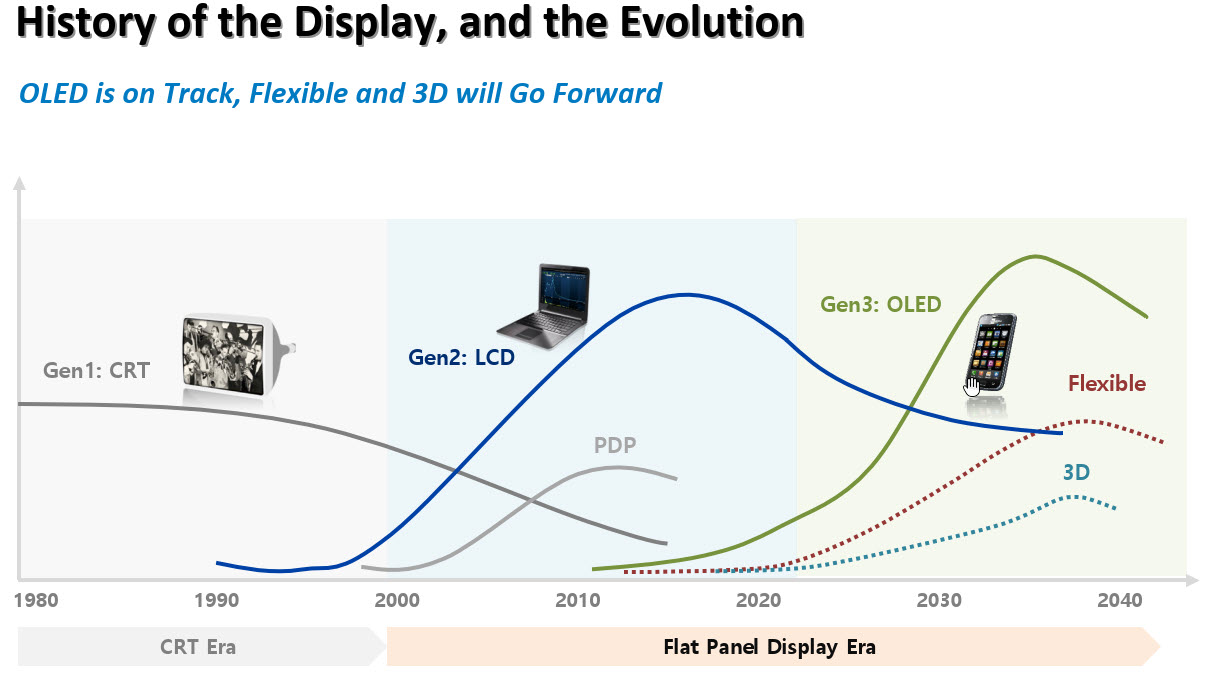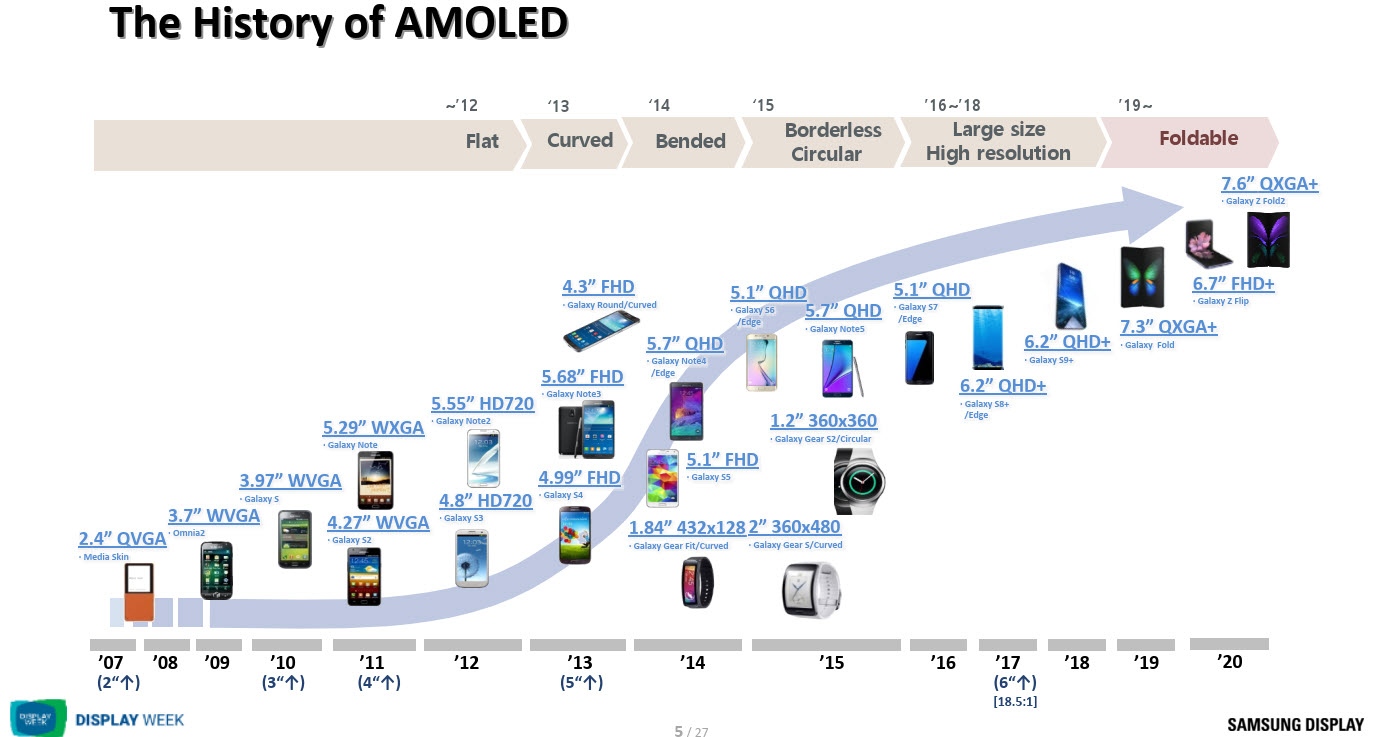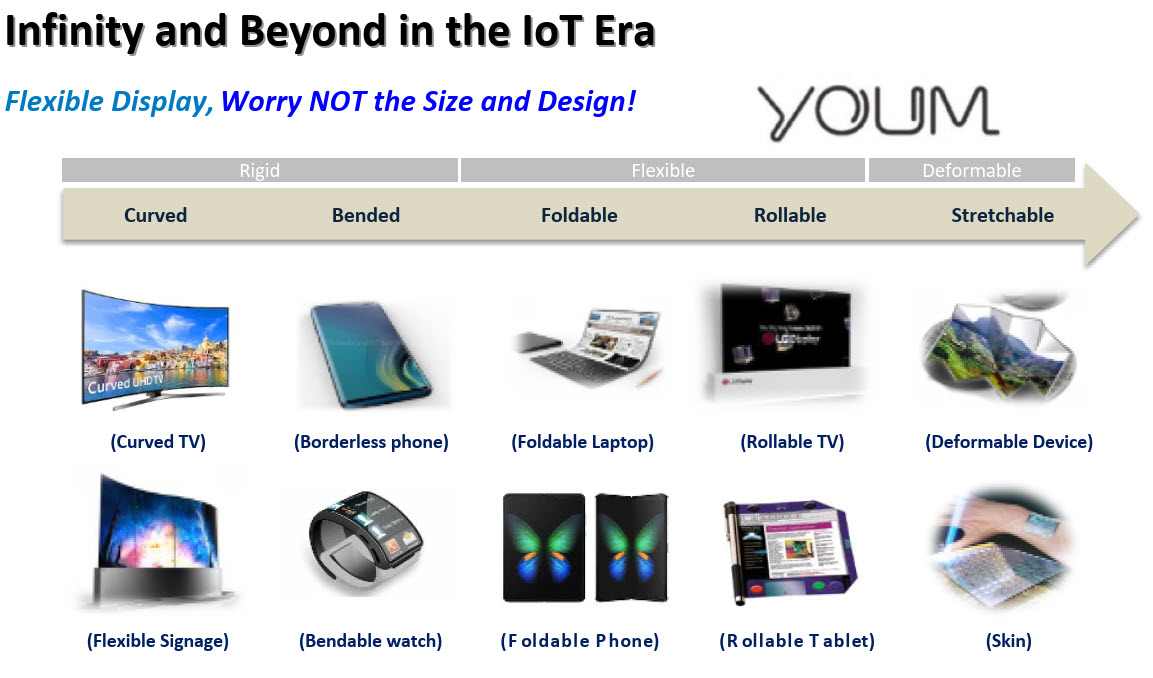In a talk at the SID Display Week, Dr Sung-Chan Jo of Samsung Display gave a paper 54.1 that set out his vision for stretchable displays in “the 4th Industrial Revolution”.

He started his talk with a look back at the evolution of the display industry from CRT to LCD and PDP and now, increasingly to OLEDs and flexible displays. Although LCD will not go away very quickly, OLED and Flexible displays as well as those that are 3D. 3D didn’t do well in the past because the industry did not solve the problems of customers with the technology but Samsung Display is serious about continuing development of that technology.
OLED has really revolutionised the performance of displays with wide colour gamut and high contrast with fast response times compared to LCD. The technology has also allowed flexible and foldable displays as well as allowing transparent and mirror applications. Samsung wants to continue to push flexible display performance to be as flexible as paper. That will be a challenge for LCD.
Wristwatches should be ‘flattened’ and wrapped around the wrist and electronic newspapers should be foldable to carry, but big to view under the aim of ‘carrying small, seeing big’. Transparent displays will allow intuitive augmented reality and interaction with display surfaces such as desks, tables and walls.
OLED has developed under fierce competitive pressure from LCDs from the first 2.4″ QVGA devices in 2007 through to the kind of display seen in the Galaxy Fold series, with high resolution and foldability.
However in the era of the ‘Internet of Things’ the display has to be part of the technology ‘big picture’. The information is the most important thing and getting that communicated to people – so the human machine interface has to be fast and all around us. Displays should cover many of the surfaces around you in life.
Traditionally, displays have been in monitors, TVs and mobile devices, but that will change with more wearable displays, automotive, health-related, educational, architectural and retail displays. This will give access to information anywhere and all the time.
Automobiles will provide ‘everything from the internet’ and spaces in the office such as meeting tables will become interactive. Displays will not just be simple rectangles and box shapes. Shopping and retail environments will change. In fashion, for example, displays will show how you will look in clothes without the need for changing rooms.
Outdoors, projects such as the Allianz Arena in Munich, the Agbar Tower in Barcelona and the YAS Hotel in Abu Dhabi have shown the potential of LED in architecture. Windows could be replaced by smart windows including transparent OLEDs with real-time information.
Today, although curved displays can be made, they are quite limited in curvature in most cases. The applications are also not so interesting. Samsung Display wants to give much more freedom to designers by having more flexible form factors.
A key part of the direction is to enable curvature in different directions especially in applications such as automotive. Thirty years ago, the interiors of cars were based on flat surfaces, but now there are complex multiple curves. Side view mirrors will disappear and navigation displays will move to the windscreen. The centre console will provide other information and functions. If the display can be stretchable, it can seamlessly follow the curves of the car interior.
There are many different possibilities from flat and curved rigid displays, through flexible foldable and rollables to fully stretchable displays.
Samsung’s Youm technology has opened a number of degrees of curvature, but is still not completely flexible in every way. 5G and 6G will drive faster data access and the mobility of the display will become more important.
Turning to stretchable displays, he presented current architectures, where delicate and rigid parts are isolated and separated by flexible parts using ‘accordion physics’ and serpentine structures. However, an alternative strategy is to develop genuinely stretchable materials where all the components in the display are flexible, with no rigid elements at all.
Flexible and stretchable prototypes have been made with individually encapsulated OLED pixels with flexible conductors between them. A 13″ 300cd/m² prototype was made.
Samsung Display categorises two kinds of stretchable displays. Those that are typically stretched once, with, for example, thermoforming of a plastic sheet to fit a design are classified as static types. Dynamic types can be repeatedly deformed and stretched.
For the dynamic type, you have to use stretchable substrates. stretchable pixels and expandable conductors that are intrinsically stretchable. Even though this makes manufacture much harder than with a rigid substrate, there is no choice.
At the SID, a video was shown of a 13″ dynamically stretchable display and now that video is on YouTube so that it is more accessible – and that was the trigger for this Display Daily. (BR)




